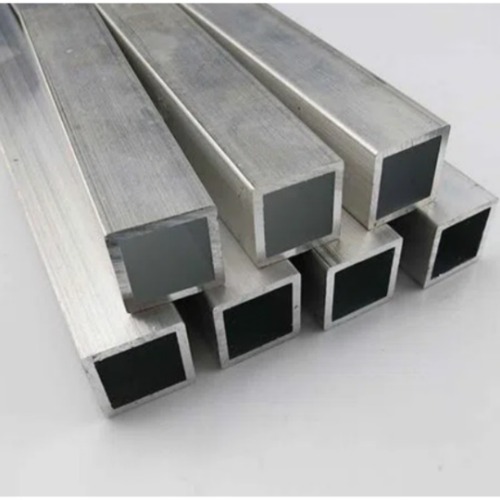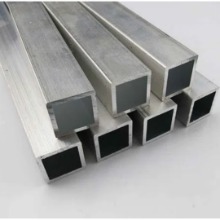
Aluminum 6061-T5
0.00
(해외배송 가능상품)
Product Name
Aluminum 6061-T5
Product Summary
Aluminium 6061-T5
Manufacturer
Self-production
Origin
Republic of Korea
| Monthly rental fee |
per month (For month(s))
|
|---|
Purchase
Frequency
Subscription discount save
- Get off payments save

(Minimum Order : 1 or more / Maximum Order 0 or less )
Discounted amount of your subtotal will appear when you place your orders.
Aluminum 6061-T5 square bar
Surface treatment: skinless, anodizing, fluorine coating
Aluminum alloy 6061
Aluminum 6061 is a precipitation hardening alloy, which means that the particles are dispersed within the metal's grain structure, hindering its movement and strengthening during heat treatment, effectively increasing its strength and durability. Among the major alloying elements are silicon and magnesium, in addition to elements such as iron, copper, and zinc.
Developed in 1935, Aluminum 6061 is one of the most versatile aluminum alloy options. This is because they can be manufactured by many of the most frequently used technologies, offering excellent workability and a wide range of mechanical properties.
Additionally, 6061 exhibits a high level of corrosion resistance and has excellent weldability. Aluminum 6061 is available in a variety of versions, including reinforced 6061-T6 and 6061-T651 grades and pre-strengthened 6061-O grades.
Overall, Aluminum 6061 is a good alloy choice for projects that require greater material strength or structural support. Some of the most common uses are the construction of aluminum cans for food and beverage packaging, construction of small utility boats, and construction of aircraft components such as fuselages and wings.
6061 is also used in making bicycle frames, motorcycles, firearms, and camera lenses.
Aluminum alloy 6063
Like aluminum 6061, 6063 aluminum alloy counts silicon and magnesium as alloying elements. Aluminum 6063 is widely known for its weldability, heat treatability, and corrosion resistance. The uses of aluminum 6063 are generally not as common as 6061, and its main uses fall within interior and exterior architectural applications.
Another important feature of aluminum 6063 is that it is successfully used in custom aluminum extrusions. This alloy allows the creation of complex shapes with smooth surfaces, allowing it to be used for premium casework, angles, corners, coves, out corners, bars & visible elements.
Facial nose and architectural trim. In addition to being used in window frames, door frames, roofs and signs, aluminum 6063 is also used in the fabrication of pipes and tubing and for furniture purposes. The specific mechanical properties of aluminum 6063 vary depending on its properties.
Alloy 6061 vs 6063
When comparing the two options of 6061 or 6063 aluminum, what is generally more important in terms of use of extrusion, strength or finish options? Aluminum alloy 6063 is commonly used in custom extrusions and has better properties for forming, mechanical performance. ,
and acceptance of anodized finish options. If your application requires a higher level of strength, most people will choose 6061 over 6063. For example, comparing aluminum alloys 6061 t6 and 6063 t6, the ultimate tensile strength of 6061 t6 is at least 42,000 psi, and the yield strength is:
Minimum 35,000 psi. This compares to a 6063 t6 ultimate tensile strength of at least 28,000 psi and a yield strength of 23,000 psi.
How to Choose Between 6061 or 6063 Aluminum
When comparing 6061 or 6063 aluminum for a job, it ultimately comes down to what is most important to the integrity and longevity of the product you produce. Both score highly for formability, workability, and heat treatability, but there are a few areas where they offer a slight advantage.
For example, when it comes to strength, 6061 alloy has an advantage over 6063. On the other hand, using 6063 in aluminum extrusion facilitates the manufacturing of complex architectural aluminum trims and profiles.
Aluminum is a highly valued material across industries due to its incredible durability and versatility. Because there are many different types of aluminum alloys, it is important to do thorough research before investing in a specific option.
However, aluminum comes in a variety of shapes and grades, so choosing a grade of aluminum for a specific project can be a bit tricky. The grade you choose will depend on a variety of factors, including the level of corrosion resistance required, the overall strength of the aluminum, its formability, its weldability, etc.
Determining how these factors rank against each other will help you best decide which aluminum to choose.
aluminum alloyThe physical properties exhibited are greatly influenced by the processing of Al products, and heat treatment plays an important role in the properties of aluminum materials. Forged aluminum alloys are often denoted as “T6”, which is a combination of the letters T + a number indicating the heat treatment conditions for the alloy.
A standardized system has been developed to specify these treatments. The common heat treatment codes for aluminum alloys are F, O, H, W and T, among which the H and T states are the most common. Today we will compare aluminum alloy grades 6063 T5 and T6 for further discussion.
First of all, we need to know the aluminum alloy datasheet. Sheets of these alloys are usually associated with a temper designation to indicate the treatment used to produce the listed properties.
T temper variant designation of aluminum alloy
code | Details |
T1 | Cooling from high temperatures + aging naturally |
T2 | Cooling from high temperature + cold working + natural aging |
T3 | Heat treatment + cold processing + natural aging solution |
T4 | Heat treated solution + naturally aged to a substantially stable state |
T5 | Cooling + artificial aging in high temperature molding process |
T6 | Heat treatment + artificially aged solution |
T7 | Stabilized solution after heat treatment |
T8 | Artificially aged solution after heat treatment + cold processing |
T9 | Heat treatment + artificial aging + cold treatment |
T10 | Cooled from high temperature + artificially aged and then cold worked |
TX51 | Heat-treated solutions are stress relieved by stretching; do not straighten after stretching. |
TX511 | After heat treatment and stress relief by stretching, it is straightened and refined to meet dimensional tolerances. |
TX52 | Heat treated to relieve stresses and compressed to produce a permanent set of 1% to -5% |
As can be seen from the table above, T5 and T6 only have different heat treatment conditions, but at the same time, different heat treatments will produce some differences in the physical properties of 6063 aluminum alloy. Temper T5 refers to high temperature cooling, forming process and artificial aging condition, suitable for high temperature forming process after cooling, not cold working
(can be straightened, leveled, but does not affect the mechanical properties of the limit) ) and artificial aging Al-products. And T6 refers to the state of artificial aging after solution heat treatment, and is suitable for hot forming process after cold working, not cold working.
conditions | Tensile Strength (MPa) | Yield Strength (MPa) | Hardness (HW) | extension |
6063T5 | 160 | 110 | ≥8.5 | 8 % |
6063T6 | 205 | 180 | ≥11.5 | 8 % |
For the two heat treatment systems (T5 and T6), T5 can meet the corresponding mechanical properties of T6. For example, aging temperature 6063 t5 205℃, aging time 1 hour: 6063 T6 solution heat treatment temperature of 515℃~525℃, water quenching (less than 35℃), aging temperature 175℃, aging time 8 hours.
Generally, 6063 T5 and T6 can be widely used in aerospace and communication fields, such as automatic mechanical parts, mold manufacturing, electronics and precision instruments, SMT, PC board solder carrier, etc. They have different definitions, mainly reflected in their mechanical properties, but there is no significant difference in 6063 alloy products.
Generally, T5 can meet the basic requirements, and if there are high requirements for strength or hardness, T6 is a more ideal choice.
Mechanical Properties of 6061 Aluminum Versus 6063 Aluminum
6061 | 6063 | |
tensile strength | 124-290 MPa | 145–186 MPa |
Yield strength | 276 MPa/40000 psi | 214 MPa/31000 psi |
Fatigue strength | 96.5 MPa/14000 psi | 68.9 MPa/10000 psi |
Hardness (Brinell) | 95 | 73 |
Machinability | Good | Fair |
Thermal conductivity | 151-202 W/(m·K) | 201-218 W/(m·K) |
Nominal Chemical Compositions
Alloying Elements – Percent | |||||||||||
Alloy | Mn | Fe | Mg | Si | Cu | Zn | Ti | Cr | Other (Each) | Others (Total) | Al |
6061 | 0.0 – 0.15% | 0.0 – 0.70% | 0.80 – 1.20% | 0.40 – 0.80% | 0.15 – 0.40% | 0.0 – 0.25% | 0.0 – 0.15% | 0.04 – 0.35% | 0.0 – 0.05% | 0.0 – 0.15% | Balance |
6063 | 0.0 – 0.10% | 0.0 – 0.35% | 0.45 – 0.90% | 0.20 – 0.60% | 0.0 – 0.10% | 0.0 – 0.10% | 0.0 – 0.10% | 0.0 – 0.10% | 0.0 – 0.05% | 0.0 – 0.15% | Balance |
When comparing 6061 aluminum and 6063 aluminum, they appear very similar in characteristics. However, for applications in which higher strength and a finer finish are needed, 6063 may be a more suitable choice. To decide whether 6061 or 6063 is right for your project, contact our qualified team now. One of our representatives will help you make the best decision for you.
Product payment information
We accept the following forms of payment:- Credit Card
- Visa
- MasterCard
- American Express
- Discover
- PayPal
Exchange and return information
Exchange and return address-
You are eligible for exchange or return in the following cases:
- You can exchange or return your order within seven (7) days of receiving your contract details. If the delivery is delayed after you have received your contract details, you can exchange or return your order within seven (7) days upon receipt of your order or after the start of the shipping date.
- You may exchange or return your order within three (3) months following delivery or within thirty (30) days of becoming aware that the goods and services were delivered in specifications that are different from how they were advertised or promised.
You are not eligible for exchange or return in the following cases:
- If the goods have been damaged or destroyed due to causes attributable to you (However, you are eligible to cancel your order if you had opened the packaging to examine the contents.)
- If the value of the goods has depreciated significantly due to partial or heavy use
- If the value of the goods has depreciated significantly because a long period of time has elapsed, making it difficult to resell the goods
- If the packaging has been damaged for goods that can be reproduced as identical counterfeits
- If we have obtained your consent of ineligibility because irrecoverable damage to the seller is expected in the case of an order cancellation for goods that are produced individually for an order.
- If the provision of digital content has already commenced. (However, this shall not apply to the portion for which the provision of such digital content has not commenced in cases of a contract comprising divisible services or divisible digital content.)
※ You bear the cost of returning your order in the case of an exchange or return whereby the reason for exchange or return is based on your preferences (including exchange for a different color or size, etc.) rather than damage or if the product not matching its description.
Review 0
There are no posts to show
Q&A 0
There are no posts to show





